#hatice sultan daughter of mustafa iii
Photo






The granddaughters of Sultan Ahmed III of the Ottoman empire who reached adulthood -- requested by anon
#history#historyedit#ottoman history#ahmed iii#saliha sultan daughter of ahmed iii#ayse sultan daughter of ahmed iii#esma sultan daughter of ahmed iii#sah sultan daughter of mustafa iii#beyhan sultan daughter of mustafa iii#hatice sultan daughter of mustafa iii#ayse durrusehvar hanim daughter of abdulhamid i#esma sultan daughter of abdulhamid i#hibetullah sultan daughter of abdulhamid i#ottomanladiesedit
116 notes
·
View notes
Text
International Known Queens & Empresses (4/?)
Haseki Hürrem Sultan


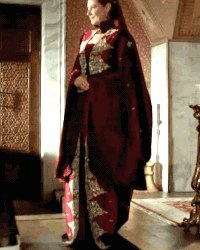



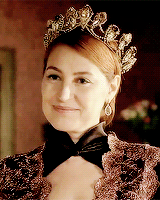
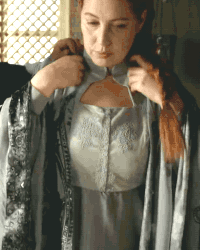
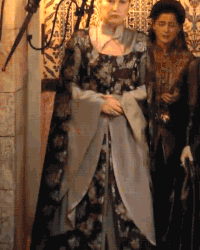

Daughter of Lisovsky (?)
Wife (Haseki Sultan) of Suleiman the Magnificent
Mother of Sehzade Mehmed, Mihrimah Sultan, Sehzade Abdullah, Sultan Selim II, Sehzade Bayezid, and Sehzade Cihangir
Grandmother of Ayse Hümasah Sultan, Sultanzade Osman (Mihrimah), Sultan Murad III, Sehzade Mehmed (Selim), Sehzade Abdullah (Selim), Sehzade Cihangir (Selim), Sehzade Mustafa (Selim), Sehzade Suleiman (Selim), Ismihan Sultan (Selim), Gevherhan Sultan (Selim), Sah Sultan (Selim), Fatma Sultan, Sehzade Orhan, Sehzade Osman (Bayezid), Sehzade Abdullah (Bayezid), Sehzade Mahmud (Bayezid), Mihrümah Sultan (Bayezid), Hatice Sultan (Bayezid), Ayse Sultan (Bayezid), and Hanzade Sultan (Bayezid)
11 notes
·
View notes
Photo

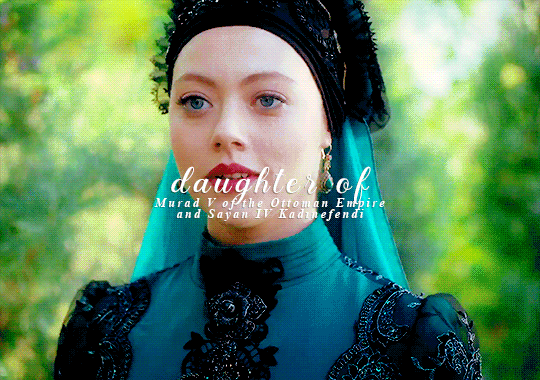



4 May 1870: birth of Hatice Sultan, daughter of Ottoman Sultan Murad V
Hatice Sultan's life is a drama starting from her mother's pregnancy, or, as Nahid Sıtkı Örik describes it, "Among the women of the Ottoman Empire, she is the one whose life resembles the most a velvety adventure from a dramatic novel."
In terms of similarities within the dynasty, the life events of Hatice Sultan reminds us of Hatice Sultan, her kinsman-namesake, daughter of Mustafa III, who caused many rumours with her relationship beyond the friendship with the painter Melling. — Necdet Sakaoğlu, Bu Mülkün Kadın Sultanları
#history#historyedit#hatice sultan (daughter of murad v)#MY BABY GIRL#HAPPY BIRTHDAY#she's a taurus like me coincidence? i think not#*mio
100 notes
·
View notes
Text
Portrait of Emetullah Rabia Gülnüş / Emetullah Rabia Gülnüş portréja
Origin and youth
Emetullah Rabia Gülnüş was a woman of Greek descent who was certainly captured during the Venetian-Ottoman War. The grimace of fate is that the outbreak of the war was attributable to Mehmed IV, who later became Emetullah's sweetheart. In the summer of 1645, Ibrahim I declared war on Venice and sent a large Turkish army to Crete. The immediate cause of the war was that Maltese pirates captured an Ottoman ship carrying several influential people. Among them was the wet-nurse of Mehmed IV and her own son, whom Sultan Ibrahim I loved very much. So much that the he cared more with the wet-nurse's son than he did with his own child, Mehmed. The war lasted for decades, until 1669, so it is not possible to determine exactly when Emetullah was captured.
Emetullah was a gift from a certain Deli Hüseyn Pasha, who took the Cretan slaves he had captured to the Sultan’s palace and recommended the bests to the sultan’s harem. Deli Hüseyn Pasha died in 1659, so Emetullah definitely joined the harem before that time. This, unfortunately, does not help us, for considering that Emetullah was already a favorite of the Sultan in 1660 and this had to be preceded by several years of education, so most likely she was captured before 1654. Many give the year 1645 as captivity, however, this is almost ruled out. In general, children under the age of 5 were not caught, because they caused more trouble than benefit, and were more likely to die during the long and tumultuous journey. Assuming that Emetullah was roughly the same old — or younger — than Mehmed IV (born in 1642), she could have been captured in 1648 at the earliest.
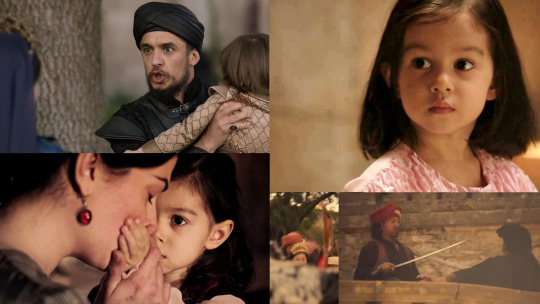
The consort
Emetullah Rabia Gülnüş matured into a beautiful young woman, making her perfectly suited to entertain the sultan. Emetullah is one of the few sultanas whose appearance is known in considerable detail. One of the ambassadors had the opportunity to see one of Emetullah's clothes and belts, on the basis of which he thought the Sultana was a taller-than-average but graceful. The same ambassador heard from his informant that the Sultana had fine skin and blue eyes. Other descriptions said she had black curly hair. Towards the end of her life, Emetullah was reportedly more plump than slender.
It is not known exactly when Mehmed started receiving concubines and when Emetullah became his favorite. Mehmed's first child, a girl, was born in 1660. According to circumstantial evidence, this girl, Hatice, was the first child of Emetullah Rabia Gülnüş. Based on this, we can assume that Emetullah became Mehmed’s partner in the late 1650s. However, their relationship had not really deepened at this point, as Mehmed spent the next period away from his harem, traveling a lot.
Shortly afterwards, the Sultan moved his entire court to Edirne, making it the de facto capital of the Empire. It was a perfect timing that his firstborn son, Mustafa, was born here in 1664. Mehmed was so happy for the birth of his son that he piled up the child’s mother, Emetullah Rabia Gülnüş, with amazing gifts and never left the woman alone from then on. He took her with him on his hunts and even on his campaigns. Together they had at least two more children, Ahmed (later Ahmed III) in 1673 and Fatma Emetullah in 1675. In addition to the four children mentioned above, Mehmed certainly had other children (Ayşe, Bayezid, Ümmügülsüm, Süleyman). The identity of their mother is unknown, it could have been Emetullah Rabia Gülnüş, but even other concubines.
As the Sultan’s favourit concubine, the mother of his children, Emetullah, was the second highest-ranking woman in the harem. Her relationship with the first woman of the harem is controversial. Some say Emetullah was an evil, violent woman who regularly confronted her mother-in-law, Mehmed’s mother, Turhan Hatice Valide Sultan. However, there is no evidence to that effect, in fact! Emetullah and Turhan certainly worked together periodically to achieve their political goals. In 1682, Grand Vizier Merzifonlu Kara Mustafa Pasha began to anger Turhan more and more, as he tried to make her political influence impossible. We don’t know what motivation Gülnüş was for, but she helped Turhan remove the pasha. Eventually, unfortunately, Turhan died before the pasha was deposed. Either way, this collaboration makes it unlikely that the relationship between Emetullah and Turhan would have been bad. In addition, Emetullah had a good relationship with Turhan’s eunuch, Yusuf Agha, which would also not have been possible if the two women did not like and respect each other.
Many blame Emetullah’s ambitions for the supposedly fragile relationship. Legend has it that Mehmed’s beloved, Emetullah Rabia Gülnüş, tried to persuade him to execute his half-brothers and make their own sons his heir instead. However, knowing the infinitely close relationship between Mehmed and his sons, we cannot rule out that Mehmed himself wanted to change the inheritance. Whoever was its inventor, no one supported the idea, not the people, not the pashas and not even Mehmed’s mother, Turhan. Turhan, to protect Prince Suleiman and Ahmed from death and his son from fall, always kept her two foster sons with her. If Turhan traveled, she took them with her so that Mehmed would not execute them in her absence.
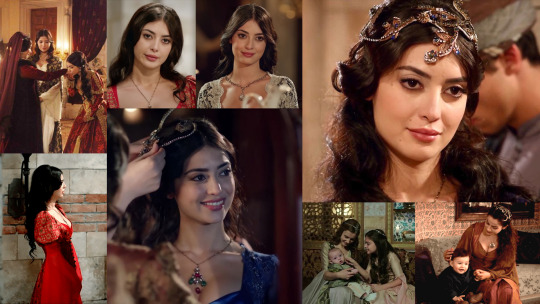
Sultana on the campaigns
After the birth of Mustafa, the sultan did not want to go anywhere without Emetullah and his son. From then on, Emetullah accompanied her sweetheart everywhere, hence her nickname became, the "itinerant sultana". The first such campaign took place in 1672, when Mehmed took the whole harem of his, his mother, his Haseki, and his sisters to Polish territory. From this trip we are left with a description of an incident in which Emetullah’s silver carriage was stuck in the mud due to bad weather on the way to the Babadag camp. The sultan could not wait for hours for the carriage to be released, so Fazıl Ahmed Pasha, the Grand Vizier, was left with his men to help the Sultana. On August 28, 1672, Kamianets-Podilskyi fell and became the property of the Ottomans. Mosque were formed from all the churches in the city, one of which was named in honor of Gülnüş. With this she became the first and only Haseki Sultan to enjoy such a privilege.
They spent a few months near the front and then returned to Edirne. However, the agreement was crossed by the Polish, so in 1673 Mehmed was forced to return to the front and took his sweetheart with him again. This is particularly noteworthy and not just because the sultans had not taken their wives on the battlefield for centuries, but because Emetullah Rabia Gülnüş was already heavily pregnant with her second son. The baby was finally born during the campaign on 31 December 1673 at Hacıoglupazarı in present-day Bulgaria. This was the only time an Ottoman prince was born near the battlefield, away from the security of the capital or the provinces. The fact is, however, that this camp was also very far from the real war.
After the success of the Polish campaign, the Sultan retreated to Edirne, where in 1675 he organized a huge ceremony in which his two sons, Mustafa and Ahmed, were circumcised and his eldest daughter, Hatice, was married off. Mehmed's appearance was reported at the event, but many praised the princes and Emetullah Rabia Gülnüş, who attended the ceremony as well. According to one agha present, the Sultana was a beautiful woman with chesnut hair. It is questionable, of course, to what extent we can believe such descriptions, since her hair was certainly covered with a veil, even if she was present. Then in 1676 Mehmed embarked on another campaign - again, of course, with his sweetheart on his side - this time to match the Russians. The aim of the campaign was to rule over today's Ukrainian - then Polish - territories. Finally, in 1681, the campaign ended with an agreement.

The first woman in the harem and the fall
Whatever the relationship between Turhan and Emetullah was, with the death of Turhan in 1683, the road to the top of the harem opened up before Emetullah. Although her large-scale construction projects, as a Haseki, began during Turhan’s life, her political career could have really gained momentum only without Turhan. There is a known case, for example, in which one of Mustafa's teachers, Feyzullah Efendi, who was very close to Emetulla committed a mistake and was faced with severe punishment. Eventually, Emetullah intervened and saved the man's life.
However, Emetullah could not enjoy the control of the harem for long. The 1680s were about a series of tragedies. The enemies of the Ottoman Empire clashed in turn and squeezed the Ottomans more and more out of European territories. This caused general dissatisfaction, and then over time, chaos, executions, financial problems spread throughout the empire, more and more rebellions set in, and even natural disasters plagued the empire. Turhan's death was practically sealed the end of Mehmed IV also. He became increasingly unpopular, and suffered the final blow in 1687. After the tragic outcome of the second battle of Mohács, Mehmed was dethroned and his younger brother, Suleiman, was put to the throne, as Suleiman II. This meant Emetullah's move to the Old Palace.
Not only did Emetullah face the loss of her power and exile, but she was separated from her beloved. A member of Mehmed’s harem, the poet Afife Kadin, at this time composed one of her poems about Gülnüş. According to the verse, Gülnüş sobbed and shouted as long as her lungs could hold, while her loved one was torn away from her and locked up. While Mehmed sobbed quietly in the kafes, his beloved cried across the wall. In another verse of hers, Afife writes, "Tell Gülnüş to wear black / to suffer in pain / While Sultan Mehmed weeps in Şimşirlik" We do not know if Emetullah and Mehmed may have met until Mehmed's death in 1693.
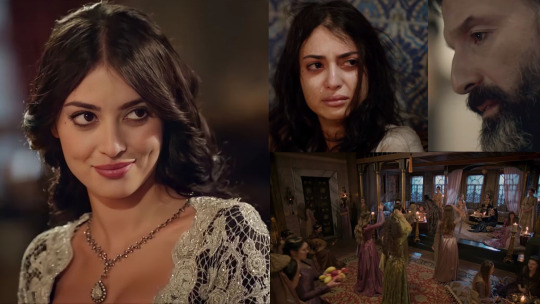
Back to the top
Due to Süleyman II's ill condition, followed by the old Ahmed II, Emetullah did not have to linger in the Old Palace for long. In 1695, barely 8 years after her retirement, Emetullah was able to return as Valide Sultan. Ahmed II died in Edirne and Mustafa II took his place as Sultan. Emetullah was then in the Old Palace in Istanbul, so thats where she received the news. As part of a huge ceremony, Emetullah went from the Old Palace to Topkapi Palace and from there to Edirne. On the way to Edirne, several bridges had to be renovated before the Valide Sultan's arrival. The costs of the bridge-renovations were recorded in the registers as Ahmed II's funeral expenses. Arriving in Edirne, her son welcomed the new Valide Sultan.
In the following years Edirne remained the de facto capital of the Empire. The sultan spent only a short period of time in Istanbul with his court, and then they were not resided in Topkapi Palace either, but preferred other palaces. Mustafa and Emetullah quickly gathered their trustworthy men around them and began to rule according to their own tastes. Thus, for example, the Feyzullah Efendi who had previously been rescued from execution by Emetullah, became the Seyhülislam. During Mustafa's reign, Emetullah built an unprecedented power for herself, her all-intertwined political influence was huge and also her son openly discussed state affairs with her. In addition, Emetullah regularly showed up among the people, leaving the harem, visiting her daughters or foundations. She lived a fairly free life. So much that at certain events she stood right next to her son, veiled but not hiding. At other times, she welcomed Seyhülislam, Grand Vizier, or other influential statesmen openly or were present at parades in Eyüb.
Emetullah’s tremendous influence over her son, the rampant corruption among statesmen, and the neglect of Istanbul all provoked the displeasure of the people. In 1703 a huge revolt broke out in the capital, but it quickly reached Edirne as well. Emetullah provided good advice to her son, trying to quickly replace any statesman who might have harmed them, but it was too late. During the rebellion Mustafa II was dethroned. The rebels refused to ascend Mustafa's younger brother, Ahmed, as he was also the son of Emetullah. They wanted to replace Mustafa II with the 11-years-old Şehzade Ibrahim, the son of Ahmed II and his Haseki, Rabia Sultan . The ulema, however, rejected this based on the boy's age, and as a polite gesture a letter was written to Emetullah asking for permission to dethrone Mustafa and replace him with Ahmed III. Although she had no real say, Emetullah responded in agreement:"All of you have requested in concord and unanimity that my majestic son Sultan Ahmed be seated on the imperial throne and that my other son Sultan Mustafa be deposed. Your petition has been complied with."
However, the dethronement of Mustafa was far from enough for the rebels. Gülnüş was demanded to leave Edirne or Topkapi Palace and retire to the Old Palace. Emetullah did indeed remain there until the circumstances calmed down enough for her to return. Perhaps she did not even regret her retreat, for Mustafa, her firstborn son, died in December 1703 of natural causes.
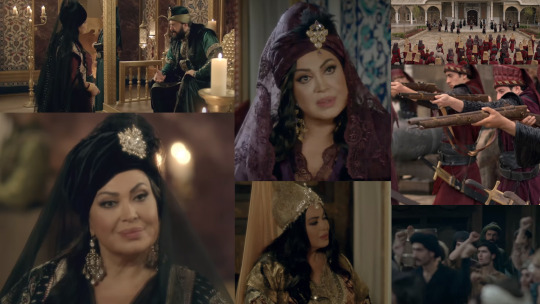
Shadow Valide
The pashas tried to keep Gülnüş away from her son and from state affairs because they feared a revenge from Emetullah on Mustafa's dethronement and subsequent death. They feared they would face a revenge campaign like the pashas who in 1648 dethroned and executed the son of Kösem Sultan, Ibrahim I. In the meantime, however, it turned out that Gülnüş did not even think of revenge. She learned from her previous mistakes and from the end of the Kösem Sultan, so she was much more careful and respectful with the pashas from then on than before. There were rewards for this.
One of Ahmed III’s first steps was to take the imperial court back to Istanbul, so Edirne ceased to be the de facto capital. To increase the sultan’s popularity among the people of Istanbul, plenty of public events were organized, such as archery competitions. Of course Gülnüş tried to help her second son, Ahmed III, but she did it all from the background. However, her participation in political life is by no means conditional. Several letters have survived, which she exchanged with the pashas during Ahmed III's reign. When one of the Grand Vizier tried to have a say in which eunuch Gülnüş would appoint to lead the harem, he quickly found himself without a position. So Emetullah Rabia Gülnüş did not give up politics at all, only she played it in a smarter and less spectacularly way.
Emetullah Rabia Gülnüş returned to the limelight once again. In 1709, during the war between the Russians and the Swedes, the Swedish king was captured and then found refuge in the Ottoman Empire. The king sought the help of the Ottomans to regain his throne. Emetullah, along with the second Vizier Damat Silahdar Ali Pasha, publicly stood by the king's request and tried to persuade Ahmed III to wage war against the Russians. The other members of the divan, such as the Grand Vizier, did not agree at all with Gülnüş's will, so a controversy ensued. Ahmed III finally, following the advice of his mother, went to war with the Russian Empire in 1711. The war ended with treaties.
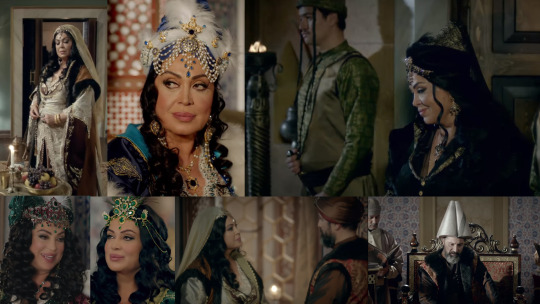
Her death and legacy
Emetullah Rabia Gülnüş followed her son from Istanbul to Edirne in the summer of 1715 to welcome there the army of the Grand Vizier, who had successfully re-conquered Morea from the Venetians. Her health here deteriorated in a few months and whatever the best doctors of the empire tried Emetullah Rabia Gülnüş died on November 6, 1715, in Edirne. Funeral prayers were held in Edirne in the presence of the Sultan, Grand Vizier, Ulema, and all important statesmen, and then her body was taken back to Istanbul, where she was buried in her own tomb on November 9th. Her turbe is particularly interesting, as it is not covered like most dynastic tombs, but open to the sky. By the way, this was built according to Emetullah's own wishes. There are plenty of plants and water in the octagonal tomb, which was probably built like that to resemble the Garden of Eden.
During her life, Gülnüş managed several construction projects, during which mosques, soup kitchens, schools, fountains and a tomb were built. But she converted several former churches into mosques also, and others were named in his honor. She also had foundations in Üsküdar, Edirne, Chios, Mecca, Medina, Kastamonu and Menemen.
Emetullah Rabia Gülnüş was the last valide sultan during the period of the Sultanate of Women. Although there were still some Valide with exceptional influence after her, no one was able to gain an influence similar to her and her predecessors anymore. It was the death of Emetullah Rabia Gülnüş that eventually completely ended the period of the Sultanate of Women. True, she was not the last Haseki Sultan, because her brother-in-law Ahmed II had a Haseki, Rabia Sultan, but the woman had already died in 1712 before Emetullah. So with the death of Gülnüş, on November 6, 1715, the more than 180-years-long period of the Sultanate of Women ended. The Sultanate of Women was followed by the Tulip era, which was one of the most peaceful periods in the history of the empire, during which Westernization began.

Used sources: B. İ. Argıt - A Queen Mother and the Ottoman Imperial Harem: Rabia Gülnuş Emetullah Valide Sultan (1640-1715); M. Ç. Uluçay - Padişahların Kadınları ve Kızları, Y.Öztuna - Devletler ve Hanedanlar, N. Sakaoğlu - Bu Mülkün Kadın Sultanları; M. Özgüleş - The Women Who Built the Ottoman World: Female Patronage and the Architectural Legacy of Gülnuş Sultan; H. G. Majer - The Harem of Mustafa II (1695-1703); J. Dumas - Les perles de nacre du sultanat; A. D. Alderson - The Structure of the Ottoman Dynasty; L. Peirce - The Imperial Harem: Women and Sovereignty in the Ottoman Empire; C. Finkel - Osman's Dream: The Story of the Ottoman Empire
* * *
Származása fiatalkora
Emetullah Rabia Gülnüş görög származású nő volt, akit minden bizonnyal a velencei-oszmán háború során fogtak el. A sors fintora, hogy a háború kirobbanása köthető volt IV. Mehmedhez, aki később Emetullah kedvese lett. I. Ibrahim 1645 nyarán hadat üzent Velencének és egy nagy török sereget küldött Krétára. A háború közvetlen oka az volt, hogy máltai kalózok fogtak el egy oszmán felségjelzésű hajót, mely több befolyásos személyt szállított. Köztük volt IV. Mehmed szoptatósdajkája és annak fia, akiket I. Ibrahim szultán nagyon szeretett. Olyannyira, hogy a szoptatósdajka fiával többet törődött, mint saját gyermekével, Mehmeddel. A háború évtizedeken keresztül zajlott, egészen 1669-ig, így pontosan nem meghatározható, hogy Emetullah mikor esett fogságba.
Emetullah egy bizonyos Deli Hüseyn Pasa ajándéka volt, aki a saját maga által ejtett krétai rabszolgákat vitte a szultáni palotába és a legjobbakat a szultán háremébe ajánlotta. Deli Hüseyn Pasa 1659-ben elhunyt, így Emetullah mindenképp ezen időpont előtt került a hárembe. Ez sajnos nem segít nekünk, ugyanis tekintve, hogy Emetullah 1660-ban már a szultán kedvence volt és ezt több éves oktatás kellett, hogy megelőzze, a legvalószínűbb, hogy 1654 előtt esett fogságba. Sokan adják meg az 1645-ös évet, mint fogságba esés, azonban ez szinte kizárt. Általában 5 év alatti gyerekeket nem fogtak el, velük több volt a baj, mint a haszon és nagy eséllyel haltak meg a hosszú és viszontagságos út során. Ha feltételezzük, hogy Emetullah nagyjából egy idős volt - vagy fiatalabb -, mint IV Mehmed (1642), legkorábban 1648-ban eshetett fogságba.

Az ágyas
Emetullah Rabia Gülnüş csodaszép fiatal nővé érett, így tökéletesen alkalmas lett a szultán szórakoztatására. Emetullah azon kevés szultána közé tartozik, akinek külsejét meglehetősen részletesen ismerjük. Az egyik követnek lehetősége volt látni Emetullah egyik ruháját és övét, mely alapján az átlagnál magasabb, de kecses nőnek gondolta a szultánát. Ugyanez a követ úgy hallotta informátorától, hogy a szultánának finom bőre és kék szeme van. Más leírások szerint fekete göndör haja volt. Élete vége felé Emetullah a beszámolók szerint inkább volt telt, mint karcsú.
Nem tudni pontosan, hogy Mehmed mikor kezdett ágyasokat fogadni és hogy Emetullah mikor vált a kedvencévé. Mehmed első gyermeke, egy kislány 1660-ban született. Közvetett bizonyítékok alapján ez a lány, Hatice, Emetullah Rabia Gülnüş első gyermeke volt. Ez alapján feltételezhetjük, hogy Emetullah a kései 1650-es években vált Mehmed partnerévé. Kapcsolatuk azonban ekkoriban még nem mélyült el igazán, hiszen Mehmed a következő időszakot a háremétől távol töltötte, sokat utazott.
A szultán nemsokkal később az egész udvartartását áthelyezte Edirnébe, ezzel gyakorlatilag mintegy de facto fővárossá tette meg az általa annyira kedvelt várost. Tökéletes időzítés volt, hogy elsőszülött fia, Musztafa itt látta meg a napvilágot 1664-ben. Mehmed annyira örült fia születésének, hogy elképesztő ajándékokkal halmozta el a gyermek anyját, Emetullah Rabia Gülnüşt és innentől kezdve sosem hagyta magára a nőt. Magával vitte a vadászataira, sőt hadjárataira is. Együtt még legalább két gyermekük született, Ahmed (későbbi III. Ahmed) 1673-ban és Fatma Emetullah 1675-ben. Mehmednek a fent említett négy gyermeken kívül bizonyosan voltak más gyermekei (Ayşe, Bayezid, Ümmügülsüm, Süleyman). Az ő anyjuk kiléte ismeretlen, lehetett Emetullah Rabia Gülnüş is, de akár más ágyasok is.
Mint a szultán kiemelt ágyasa, gyermekeinek anyja Emetullah a hárem második legmagasabb rangú asszonya volt. Viszonya a hárem első asszonyával ellentmondásos. Egyesek szerint Emetullah gonosz, erőszakos nő volt, aki rendszeresen szállt szembe anyósával, Mehmed édesanyjával, Turhan Hatice Valide szultánával. Azonban nincs erre utaló bizonyíték, sőt! Emetullah és Turhan időszakosan bizonyosan együttműködtek, hogy politikai céljaikat elérjék. 1682-ben Merzifonlu Kara Mustafa Pasa nagyvezír egyre jobban kezdte dühíteni Turhant, ugyanis próbálta ellehetetleníteni annak politikai befolyását. Azt nem tudjuk, hogy Gülnüş milyen motiváció miatt, de segített Turhannak a pasa eltávolításában. Végül sajnos Turhan előbb halt meg, minthogy a pasát lefokozták volna. Akárhogyan is, ez az együttműködés teszi valószínűtlenné, hogy Emetullah és Turhan közt rideg lett volna a kapcsolat. Mindemellett Emetullah jó viszonyt ápolt Turhan eunuchjával, Yusuf Agával, ami szintén nem lett volna lehetséges, ha a két nő nem kedveli és tiszteli egymást.
Sokan a feltételezett rideg kapcsolatért Emetullah ambícióit okolják. A legenda úgy tartja, hogy Mehmedet kedvese, Emetullah Rabia Gülnüş szultána igyekezett meggyőzni arról, hogy végeztesse ki elzárva tartott féltestvéreit és helyettük közös fiaikat tegye meg örökösének. Ismerve azonban a Mehmed és fiai közt fennálló végtelenül szoros viszonyt, nem zárhatjuk ki, hogy maga Mehmed kívánta megváltoztatni az öröklést. Akárki is volt a kifundálója, senki sem támogatta az ötletet, sem a nép, sem a pasák és Mehmed anyja, Turhan szultána sem. Turhan, hogy megóvja Szulejmán és Ahmed hercegeket a haláltól, fiát pedig a bukástól, mindig maga mellett tartotta két nevelt fiát. Ha Turhan utazott, magával vitte őket, nehogy távollétében Mehmed kivégeztesse őket.

Szultána a fronton
Musztafa születése után a szultán nem kívánt Emetullah és fia nélkül bárhová is menni. Innentől kezdve Emetullah mindenhová elkísérte kedvesét, innen ered beceneve, a "vándorló szultána" (itinerant sultan). Az első ilyen hadjáratra 1672-ben került sor, mikor Mehmed az egész háremét, anyját, Haszekijét, húgait is magával vitte a lengyel területekre. Erről az útról marad ránk egy esemény leírása, miszerint babadagi tábor felé vezető úton a rossz időjárási viszonyok miatt Emetullah ezüst fogata beragadt a sárba. A szultán nem várhatott órákat, amíg az elakadt kocsit kiszabadítják, így Fazıl Ahmed Pasa, a nagyvezír maradt hátra embereivel, hogy segítse a szultánát. 1672. augusztus 28-én Kamianets-Podilskyi elesett és az oszmánoké lett. A városban található összes templomból mecsetet alakítottak, melyek közül az egyiket Gülnüş tiszteletére nevetek el. Ezzel ő lett az első és egyetlen Haszeki szultána, aki ilyen kiváltságban részesülhetett.
Néhány hónapot töltöttek a front közelében, majd visszatértek Edirnébe. A megkötött egyezséget azonban a lengyelek keresztülhúzták, így 1673-ban Mehmed kénytelen volt visszatérni a frontra és magával vitte kedvesét is. Ez azért különösen említésre méltó, mert azontúl, hogy a szultánok évszázadok óta nem vitték harctérre asszonyaikat, Emetullah Rabia Gülnüş már előrehaladott terhes volt második fiával, akit végül a hadjáraton szült meg 1673. december 31-én Hacıoglupazarınál, a mai Bulgária területén. Ez a valaha volt egyetlen olyan eset, amikor egy oszmán herceg a hadszíntéren született meg, távol a főváros vagy a provinciák biztonságától. Tény azonban, hogy ez a tábor is igen távol volt a valódi fronttól.
A lengyel hadjárat sikere után a szultán Edirnébe vonult vissza, ahol 1675-ben hatalmas ünnepséget szervezett, melyen két fiát Musztafát és Ahmedet körülmetélték, legidősebb lányát Haticét pedig kiházasította. Az eseményen beszámoltak Mehmed külleméről, de sokan méltatták a herceget és Mehmed mellett az ünnepségen résztvevő Emetullah Rabia Gülnüşt is. Az egyik jelenlévő szerint a szultána gesztenyebarna hajú, gyönyörű nő volt. Kérdéses persze mennyire hihetünk az ilyen jellegű leírásoknak, hiszen haját egészen biztosan fátyol fedte, ha jelen volt is. 1676-ban aztán Mehmed újabb hadjáratra indult - természetesen ismét kedvesével az oldalán -, ezúttal az oroszokkal kívánt megmérkőzni. A hadjárat célja az mai ukrán - akkori lengyel - területek feletti uralom volt. Végül 1681-ben megállapodással zárult le a hadjárat.

A hárem első asszonya és a bukás
Bármilyen volt is Turhan és Emetullah kapcsolata, Turhan 1683-as halálával megnyílt Emetullah előtt az út a hárem csúcsára. Bár nagyszabású Haszekiként végzett építési projektjei még Turhan életében elkezdődtek, politikai karrierje ekkor lendülhetett meg igazán. Ismert például egy eset, mikor Musztafa egyik tanítója - aki igen közel állt Emetullahoz - Feyzullah Efendi hibát követett el és súlyos büntetés volt kilátásba helyeztve számára. Végül Emetullah közbelépett és megmentette a férfi életét.
Emetullah nem élvezhette azonban sokáig a hárem irányítását. Az 1680-as évek a sorozatos tragédiákról szóltak. Az Oszmán Birodalom ellenségei sorra fogtak össze egymással és szorították egyre kintebb az oszmánokat az európai területekről. Ez általános elégedetlenséget okozott, majd idővel káosz, kivégzések, anyagi problémák terjedtek el mindenhol a birodalomban, egyre több lázadás indult útjára és még természeti katasztrófák is sújtották a tragikus helyzetben lévő birodalmat. Gyakorlatilag már anyja halálával megpecsételődött Mehmed sorsa, egyre népszerűtlenebb lett, a végső csapást pedig 1687-ben szenvedte el. A második mohácsi csata tragikus kimenetele után Mehmedet trónfosztották és öccsét, Szulejmánt ültették trónra, aki így évtizedekig tartó elzárt élete után megkezdhette uralkodását II. Szulejmán néven. Ez egyet jelentett Emetullah Régi Palotába való költözésével.
Emetulláhnak nem csak a hatalma elvesztésével és száműzetéssel kellett szembenéznie, de elválasztották őt kedvesétől. Mehmed háremének egy tagja, a költő Afife Kadin ekkoriban komponálta egyik Emetullah Rabia Gülnüşről szóló versét. A vers szerint Gülnüş szultána addig zokogott és kiáltozott, mikor kedvesét a szultánt elszakították tőle és elzárták, amíg csak bírta a tüdeje. Mehmed pedig csendben zokogott a kafesben, míg szerelme a fal túloldalán sírt. Egy másik versében azt írja "Mondd Gülnüşnek, viseljen feketét / hogy abban szenvedje el fájdalmát / míg Mehmed szultán Şimşirlikben sír". Nem tudjuk, hogy Emetullah és Mehmed találkozhattak e még Mehmed 1693-as haláláig.

Vissza a csúcsra
II. Szulejmán szultán beteges állapota miatt, majd az őt követő II. Ahmed kora miatt nem kellett Emetullahnak sokáig a Régi Palotában senyvedni. 1695-ben, alig 8 év után Emetullah valide szultánaként térhetett vissza. II. Ahmed Edirnében hunyt el és a szintén jelenlévő II. Musztafa vette át a helyét szultánként. Emetullah ekkor Isztambulban a Régi Palotában volt, itt kapta meg a hírt. Emetullah hatalmas ünnepség keretei között a Régi Palotából a Topkapi Palotába ment, onnan pedig Edirnébe. Az Edirnébe való út során több hidat kellett megújítani a valide szultána előtt, melyek költségeit mind II. Ahmed temetési költségeiként vezettek fel a jegyzőkönyvekbe. Edirnébe érve fia üdvözölte az új valide szultánát.
A következő években is Edirne maradt a birodalom központja, csak rövidebb időszakot töltött az udvar Isztambulban és akkor sem a Topkapi Palotában voltak, hanem más palotákat részesítettek előnyben. Musztafa és Emetullah gyorsan maguk köré gyűjtötték megbízható embereiket és saját szájízük szerint kezdtek uralkodni. Így lett például Seyhülislam abból a Feyzullah Efendiből, akit korábban már egyszer Emetullah megmentett a kivégzéstől. Musztafa uralkodása alatt Emetullah sosem látott hatalmat épített magának, mindent átszőtt politikai befolyása de fia is nyíltan megvitatta vele az államügyeket. Emellett Emetullah rendszeresen mutatkozott az emberek közt, hagyta el a háremet, látogatta meg lányait vagy alapítványait. Meglehetősen szabad életet élt. Olyannyira, hogy bizonyos eseményeken egyenesen fia mellett állt elfátyolozva, de nem elbújva. Máskor a Seyhülislamot, nagyvezírt vagy más befolyásos államférfiakat fogadott nyíltan vagy parádékat tekintett meg Eyüb városrészben.
Emetullah hatalmas befolyása fiára, az államférfiak közt dívó korrupció és Isztambul elhanyagolása mind a nép nemtetszését váltották ki. 1703-ban hatalmas lázadás tört ki a fővárosban, de gyorsan elérte Edirnét is. Emetullah jó tanácsokkal látta el fiát, igyekeztek gyorsan leváltani minden államférfit, aki kárt okozhatott volna nekik, de már késő volt. A lázadás során II. Musztafát trónfosztották. A lázadók azt is elutasították, hogy Musztafa öccsét, Ahmedet emeljék trónra, hiszen ő is Emetullah fia volt, helyette II. Ahmed és Haseki Rabia szultána 11 éves fiát, Ibrahim herceget akarták a trónra ültetni. Az ulema azonban ezt elutasította a fiú korára való tekintettel és illedelmes gesztusként levelet írtak Emetullahnak, melyben engedélyét kérték Musztafa trónfosztásához. Bár nem volt valódi beleszólása, Emetullah beleegyezően válaszolt.
A lázadóknak azonban Musztafa trónfosztása távolról sem volt elég. Követelték, hogy Gülnüş hagyja el a Topkapi palotát és vonuljon vissza a Régi Palotába. Emetullah valóban ott maradt, amíg a körülmények nem nyugodtak meg eléggé visszatéréséhez. Talán nem is bánta az elvonult életet, ugyanis Musztafa, elsőszülött fia 1703 decemberében természetes okok következtében elhunyt.

Árnyék Valide
A pasák azért igyekeztek Gülnüşt távol tartani fiától és az államügyektől, mert attól tartottak bosszút állna rajtuk Musztafa trónfosztása és későbbi halála miatt. Féltek, hogy egy olyan bosszúhadjárattal találnák szembe magukat, mint azok a pasák, akik 1648-ban Köszem szultána fiát, Ibrahimot trónfosztották és kivégezték. Gülnüşről azonban időközben kiderült, hogy eszében sincs bosszút állni. Tanult az esetből és Köszem szultána halálából, így sokkal óvatosabban, tisztelettudóbban viselkedett a pasákkal, mint korábban. Ennek meg is lett az eredménye.
III. Ahmed egyik első lépése az volt, hogy a birodalmi udvartartást újra visszavitte Isztambulba, így Edirne megszűnt de facto fővárosnak lenni. Hogy a szultán népszerűsgét növeljék Isztambul népe között, rengeteg nyilvános eseményt szerveztek, például íjászati bemutatókat. Természetesen Gülnüş második fia, III. Ahmed uralkodása során is kényelemben élt és igyekezett segíteni fiát, de mindezt a háttérből tette. Részvétele a politikai életben azonban egyáltalán nem feltételes. Fennmaradt több levele is, melyet a pasákkal váltott III. Ahmed uralkodása során. Mindemellett, amikor az egyik nagyvezír megpróbált beleszólni abba, hogy Gülnüş melyik eunuchot nevezi ki a hárem élére gyorsan pozíció nélkül találta magát. Emetullah Rabia Gülnüş tehát egyáltalán nem hagyott fel a politikával, csak azt okosabban és kevésbé látványosan tette.
Emetullah Rabia Gülnüş még egyszer visszatért a rivaldafénybe. 1709-ben az oroszok és svédek közti háború során a svéd király fogságba esett, majd az Oszmán Birodalomban talált menedékre. A király az oszmánok segítségét kérte, hogy visszaszerezhesse trónját. Emetullah a második vezír Damat Silahdar Ali Pasával karöltve nyilvánosan álltak a király kérése mellé és igyekeztek rávenni III. Ahmedet, hogy vállaljon háborút az oroszokkal. A divan más tagjai, így a nagyvezír egyáltalán nem értettek egyet Gülnüş akaratával, így vita alakult ki. III. Ahmed végül az édesanyja tanácsát követve bocsátkozott 1711-ben háborúba az Orosz Birodalommal, mely egyezményekkel zárult.

Halála és hagyatéka
Emetullah Rabia Gülnüş 1715 nyarán követte fiát Isztambulból Edirnébe, hogy ott üdvözöljék a nagyvezír seregét, aki sikeresen hódította vissza Moreát a velenceiektől. Egészsége itt néhány hónap alatt leromlott és bármivel is próbálkoztak a birodalom legjobb orvosai Emetullah Rabia Gülnüş 1715. november 6-án, Edirnében meghalt. A temetési imákat Edirnében mondták a szultán, nagyvezír, ulema és minden fontos államférfi jelenlétében, majd testét visszavitték Isztambulba, ahol saját türbéjében temették el november 9-én. Türbéje kifejezetten érdekes, ugyanis nem fedett, mint a legtöbb dinaszitkus türbe, hanem az ég felé nyitott. Ez egyébként Emetullah saját kívánsága szerint épült így. Az oktagonális türbében rengeteg a növény és a víz, mely valószínűleg amiatt épült így, hogy hasonlítson az Édenkertre.
Élete során Gülnüş több építkezési projektet menedzselt, melynek során mecset, leveskonyha, iskola, kút, türbe épült. De több korábbi templomot építtetett át mecsetté, másokat pedig tiszteletére neveztek el. Emellett volt alapítványa Üsküdarban, Edirnében, Chiosban, Mekkában, Medinában, Kastamonuban és Menemenben.
Emetullah Rabia Gülnüş volt az utolsó valide szultána a Nők szultánátusának időszakában. Bár utána is akadt néhány kivételes befolyással bíró Valide, az övéhez és elődeihez hasonló befolyást senkinek sem sikerült többé szerezni. Emetullah Rabia Gülnüş halála volt az, amely végül teljesen lezárta a Nők szultánátusának időszakát is. Igaz, nem ő volt az utolsó Haszeki szultána, mert sógorának II. Ahmednek volt egy Haszekije, Rabia Sultan, a nő már Emetullah előtt, 1712-ben meghalt. Gülnüş halálával, 1715. november 6-n lezárult az a több, mint 180 éves időszak, mely során befolyásosabbnál befolyásosabb nők váltották egymást az Oszmán Birodalom előkelőségei között. A Nők szultánátusát a Tulipán éra követte, mely az egyik legbékésebb időszaka volt a birodalom történetének, és mely során elindult a nyugatosodás a birodalomban.

Felhasznált források: B. İ. Argıt - A Queen Mother and the Ottoman Imperial Harem: Rabia Gülnuş Emetullah Valide Sultan (1640-1715); M. Ç. Uluçay - Padişahların Kadınları ve Kızları, Y.Öztuna - Devletler ve Hanedanlar, N. Sakaoğlu - Bu Mülkün Kadın Sultanları; M. Özgüleş - The Women Who Built the Ottoman World: Female Patronage and the Architectural Legacy of Gülnuş Sultan; H. G. Majer - The Harem of Mustafa II (1695-1703); J. Dumas - Les perles de nacre du sultanat; A. D. Alderson - The Structure of the Ottoman Dynasty; L. Peirce - The Imperial Harem: Women and Sovereignty in the Ottoman Empire; C. Finkel - Osman's Dream: The Story of the Ottoman Empire
#Emetullah Rabia Gülnüş#emetullah rabia gulnus#emetullah rabia#emetullah#rabia#rabia gülnüş#gülnüş#gulnus#Mehmed IV#turhan hatice sultan#turhan hatice#turhan#ibrahim I#sultanate of women#Ahmed II#mustafa ii#ahmed iii#Süleyman II#Suleiman II#ayşe hafsa#Haseki Hürrem Sultan#ayse hafsa sultan#haseki nurbanu sultan#nurbanu valide sultan#Nurbanu Sultan#haseki safiye sultan#Safiye#safiye sultan#handan sultan#halime sultan
51 notes
·
View notes
Note
Leyla Feray was a perfect "Ayşe Sultan", Farah Zeynep is not that pretty plus the role of a sultana didn't suit her and of course Farya as a character sucks ! Still bitter about Tims's casting for Turhan Hatice and for how they portrayed her and she only appeared in 3 episodes Ibrahim's reign deserved its own season
I agree Anon. Harem didn’t play an important role during Murad’s reign, so to be honest I would be satisfied with having only Ayşe as a developed character. Harem during Ibrahim’s role played a HUGE role and the fact that we didn’t get all the harem dynamics of that period explored properly is my huge regret and I can bet show’s creators feel the same because they obviously planned for Season 3 devoted wholly to Ibrahim’s reign.. but such is Turkish TV market now and they still delivered a story of Kösem’s life that made sense, which is more you can tell of many TV shows nowadays, even those with huge budget and safe position like Game of Thrones that HBO would have likely prolonged as much as they could, but D&D were certain they had enough time to wrap everything up properly lol. So in those conditions,not knowing when they may get axed (and Turkish shows are filmed like two weeks in advance only), I still appreciate what they did… Now that my initial expectations about whole season of Turhan/Kösem rivalry, Ibrahim’s harem, Turhan of my dreams are more in past, I’m more able to appreciate what we got in that conditions eh.
Devoting so much time to Farya and Murya was HUGE mistake, since it didn’t save the ratings by bringing FZA’s fanbase etc., and it truly stole a lot of precious screentime later. The pacing issues are in MYK from start – back in S1 they introduced Beren earlier than planned and then rushed to end S1 with Kösem becoming regent because they weren’t sure they would get renewed. Maybe it’s crying over spilt milk now, especially since they are obviously aware that they had made a huge mistake – Farya’s screentime was clearly strongly reduced after 10 episodes and after she was removed, she was practically never mentioned again, like they pretended she had never existed lol.
Mhm I don’t think actresses’ appearance is of importance here, sultanas were normal girls, I know it is often assumed that they had to be pretty to captivate the padişah, but it was not always the case - Hürrem apparently wasn’t that conventionally pretty, but managed to charm Suleiman so much regardless. And each sultan had his own preferences. There isn’t something like “a sultana look”. I hear people talking “this actress is too pretty to play a subject, not a sultana” and I’m like ???? Royal blood doesn’t make you pretty either.
I think Leyla was absolutely fine. I liked her cutesy image in contrast to Murad’s violent nature. You can see why this girl “brought him peace” and why he ultimately destroyed her… just episode before she makes the big mistake and helps Gülbahar out, Murad threatens her to become her nightmare after Farya told him about her suspicions. She was soo scared, she was willing to do everything just not to face Mu/rat’s /spelling intentional/ wrath. And then she regretted what had done so much when she heard about people who suffered in the fire and wanted to fight Gülbahar as mother of Murad’s kids and his woman… and poor thing ultimately got exposed for wanting to fix things… #AyseDeservedBetter
I’m not satisifed with the Turhan we got, but after reading more stuff about Kösem vs Turhan conflict I’m now against the “Turhan was innocent cookie, who only jumped to her son’s defence” thing – it’s a clear example of “history being written by winners” thing. Turhan was definitely very good at propaganda – relationship between her and Ibrahim was surely tense and full of mutual dislike, and Mehmed ascending the throne and Ibrahim being dethroned surely was a good thing for her – yet in correspondence to statesmen that she wanted to bring to her side she described herself “as poor suffering widow, who just wants to punish those who killed her beloved husband”, among which she meant Kösem. There was even an occurrence when one of statesmen supporting Turhan went to Kösem to accuse her of killing Sultan Ibrahim and putting all blame on her, which reportedly shook Kösem very much. While Kösem likely did make moves to dethrone Mehmed, it’s very possible that the poisoning thing was invented by Turhan and her people to rally support. Reports put blame on “misinformation” on Suleiman Aga, who was treated as person inciting the showdown, but we know Suleiman Aga served Turhan, and it was a natural thing that servants of Imperial figures were blamed because nobody dared to accuse the actual Valide.
Turhan as Valide Sultan did not only manage harem, but was involved in state matters and the double rule often made it harder for Kösem to stabilise Empire. Turhan wasn’t deprived of being Valide Sultan; Kosem’s position was simply new & unprecedented and allowed her to be regent. While mothers began to play the role of regent recently (Kösem for Murad, Halime unofficially for Mustafa, Handan as co-regent together with Ahmed’s lala, even Mehmed III leaving the affairs in Safiye’s hands when he went on campaign to Hungary), there was no law on this and previously e.g. there was more inclination for Grand Vizier in this role.
In the end, they were both morally grey because while Kösem likely didn’t plan to poison Mehmed, of course there was always risk of him losing his life if any problems ensued following deposition, as the Ibrahim case showed.
Still, the innocent cookie defender of her son Turhan vs. evil hag Kösem narrative is not the true one.
We also must remember that:
Discretion prevented Ottoman writers from criticizing royal mothers (they did not record the hostile barbs directed by Ottoman statesmen at queen mothers and favorites which made their way into European accounts), but they did not hesitate to employ invective in he case of lesser women of the sultan’s harem. Naima, so careful to defend the young queen mother Turhan, criticized other concubines of the “mad” İbrahim with relish.
Taken from: Leslie Peirce, The Imperial Harem: Women and Sovereignty in the Otoman Empire.
I’ve found some evidence for Turhan being groomed by Kösem and Turhan’s involvement in politics even during Ibrahim’s reign (namely in connection with the Crete war), so while we don’t know much about the relationship between the two women before Mehmed’s reign, there is some evidence supporting MYK’s direction. Leslie Peirce states that Kösem groomed Turhan and Thys-Senocak mentions that Atike chose and trained her.
However, as a new slave woman in the palace, a gift of Kör Süleyman Pasha to the valide sultan Kösem, she had been trained by Atike Sultan, a sister of Murad IV, and groomed by Kösem, who presented her to her son.
Taken from: Leslie Peirce, The Imperial Harem: Women and Sovereignty in the Otoman Empire. Peirce also reiterates that Kösem groomed Turhan in her short article entitled Gender and Sexual Propriety in Ottoman Royal Women’s Patronage.
Training by Atike could be also on Kösem’s request, though we cannot say for certain Atike was Kösem’s daughter, but yet again Kösem seemed to pretty much take care of whole dynasty, not only her own children. It is interesting because the position of the mother of eldest son’s gained importance due to switch to seniority and we know for certain Turhan wasn’t Ibrahim’s favourite consort – but maybe again he was attracted to her at first and the relationship deteriorated later. Due to her being mother of eldest son, Turhan had to be aware that being Valide is in store for her, and Kösem also had to accept the fact.
The fact is that with four episodes the showrunners decided to focus more on the already established characters and Turhan got pretty much sacrificed for it – after all, it was Kösem’s story. I get what they did for abridged story purposes, but what I saw on screen did not reflect my imaginations of historical Turhan.
In the end, MYK Turhan represented an extreme version of a person brought up in Ottoman harem. She was completely cold and almost entirely devoid of human emotions, save in some scenes with her children or her sadness upon Ibrahim preferring other concubines. She was truly unscrupulous and desperate to get to the highest top aka becoming regent for her son, which meant he had to become padişah while he was still a minor. She truly wanted to have it all, even if she had a lot compared to other harem girls – she was a chief haseki with high position given to her by her mother-in-law, who truly treated her exceptionally compared to other Valides we saw – she shared her power with her, taught her political stuff and introduced her to political world, involving her in her own affairs and even taking her to secret councils with her. Kösem was undoubtedly aware that in light of Ibrahim’s illness she had to keep the mother of eldest prince satisifed&feeling safe because padişah like Ibrahim was an easy target for deposition. Not only Turhan had safe position due to seniority succession rules – Kösem clearly supported her and wanted her to be her successor, e.g. backed her up in the Zarife conflict. Yes, Ibrahim had other favourites, but he was a weak sultan and he wasn’t interested in this stuff at all – he just wanted to have fun with other girls and ignored Turhan, but he wasn’t politically involved enough to try to prevent Turhan from becoming next Valide because he simply didn’t give a damn most of the time.
Turhan’s going against Kösem was a huge & risky gamble, also for her son. It’s one thing to never trust anyone fully and be on your guard, and another to go on removing everyone, so whole rule is in your hands. While we know that relations between Ibrahim&Turhan were tense, there wasn’t any repeated pattern of abuse against her or their son – Ibrahim’s outburst and throwing Mehmed justifiably shook Turhan up, but it was clear it was one-time incident that stemmed more from Ibrahim’s illness than any sort of malice or sadism. He mostly simply ignored Turhan and didn’t want to spend time in her company. Perhaps Ibrahim being a weak padişah was also why Turhan looked at him with contempt because she couldn’t accept how this man stood higher in hierarchy than her, which wounded her pride additionally. Thus said, if her primary motive had been as she said fear of Ibrahim, I don’t think she would have gone against Kösem. Kösem was after all the person who defended her to Ibrahim, tried to calm him down with regards to Turhan and she obviously supported Turhan as next Valide. Additionally, when Kösem actually controlled Ibrahim and his behaviour – later Atike didn’t care, people who were trying to use him and make him crazier for their purposes achieved their goal. Turhan purposefully wanted to make him crazier and crazier to dethrone him and now she was in the palace without her biggest former supporter. Ibrahim was definitely in far worse mental condition after Kösem’s exile and Kemankeş’ removal. We got the taste of the danger when Ibrahim threatened to strangle Mehmed during the coup – and then we finally saw fear in Turhan’s eyes. But it was she who allowed the situation to boil down to this. Turhan’s backstabbing to Kösem wasn’t only a betrayal to a person who always supported her&did a lot to her (and it was something even Ibrahim highlighted after Kemankeş’ “execution” and since he also had beef with his mother at that point, it’s hard to take his words as biased), but also her sacrificing whole nation due to striving to make Ibrahim’s reign fail so much that he would be undoubtedly deposed.
Turhan’s final win isn’t so much a triumph of very well-thought-out long-term strategy, but luck, totally unscrupulous nature, not taking into account that any bystanders might be harmed, and Kösem making a fatal mistake in the end. Until the last stand, Kösem always managed to ultimately outsmart her, and Turhan’s final victory is only due to raw force, Kösem making a fatal mistake&Kuşçu’s betrayal for reasons Kösem didn’t deserve.
In the end, Turhan and her people represented raw power which adheres to no rules or honour. Not only did they kill so many innocent people, but also showed no rules in the final stand – Kösem is strangled on the harem floor and her body is plundered (a historical fact, sadly), and Turhan only stays on balcony with devilish smile over the slaughtered palace. Köprülü does not face the elderly Kemankeş himself, but waits until his people defeat him to slice his throat. Haci is also murdered in unnecessarily cruel way by having his neck twisted in front of Tuhan bearing her stone cold face as she usually does. Turhan was presented as pretty much extreme product of that system – someone who is always coldly calculating, showing little human emotions (maybe only towards her kids) and only focused on achieving one’s goal without any scruples, and is unable to bond with anyone other than her kids. Same with people surrounding her, there are no strong, touching & genuine relationships like in Kösem’s team, which is based on loyalty that may mean even paying with death for it. There’s strong friendship between Haci & Kösem, same with Kemankeş and Deli Hüseyin, Kösem and Kemankeş deeply and truly love each other until the end, Hüseyin also prefers to die than to support Turhan. Even Lalezar’s “betrayal” is only about not letting an innocent child die, not wanting to support Turhan or switch sides for her personal gain. In a way, Turhan functions as some symbol of end of Empire, same with the depressing final shots, which is also accentuated in Kösem’s final monologue: ‘The lights have gone out, no right, no left, no death, no back, no forward, no top, no bottom (…) ” . I can see the rationale – it was first and foremost Kösem’s story, moreover a story that needed to be abridged.
However, as I said, Turhan is a real-life historical figure that actually did good things for the Empire, continued Kösem’s legacy and had her achievements, that’s why historical Turhan can never be simply a destructive force in my mind, and it’s probably the highest divergence between historical figure and show figure I have in my mind as far as MY&MYK are concerned.
We see some glimpses of Turhan actually taking her responsibilities seriously in the final episode – she decides to spare Mehmed’s brothers (which actually serves pretty much as plot twist taking into account how her character has been portrayed) and declares she intends to take care of the state. Ironically, while Kösem paid for politically training Turhan & introducing her to political world with her life, at least even her ultimate enemy wanted to honour her legacy & obey anti-fratricide law & was prepared for ruling. It was a posthumous win for Kösem here.
Of course the way historical Turhan took power from Kösem was questionable – it was full of brutality, purges, and it’s hard to imagine it was all without knowledge of her and her closest associates. /Still we know that Turhan likely didn’t kill harem girls that served Kösem, but got them married off instead as Kumrular writes in her Kösem biography/. However, she also proved capable in taking care of state and dynasty and since Mehmed was pretty much an obedient momma’s boy, she had much easier task than Kösem to for example persuade him not to kill his brothers.. honestly, try to control someone like Murad, it was a huge success Kösem managed to save Ibrahim.
I think that the portrayal of Turhan and her people may stem from not only brutal purges that followed Kösem’s death, but also from the period after Turhan appointed Köprülü the Grand Vizier – Peirce compares some of his methods to Murad’s and this period to Murad’s reign. While it was Köprülü who used bloody methods, we can guess that Turhan would have not let him stay GV if she had not accepted it. It is curious how Turhan/Murad emerged a pretty popular crackship in MYK… I was always like “they gave us Turhan who seems like a perfect match for Murad”.. just that her ruthlessness does not stem from anger, but more from cold detachment (fire and ice LMAO). I know some like to refer to Turhan as “Iron Lady”, so I suppose it was what MYK creators intended. /There is of course some anger in her too - when Ibrahim told her that she was just a coward hiding under his mother’s skirts… you just knew she would NEVER let it slide and prove to him & the rest of the world she didn’t need Kösem to stay on top./
The more I think the more I’d really love to see Müge Boz as Turhan, since Turhan wasdescribed as pretty unassuming and that was also why she was able to rally supporters. It would be cool to see Kösem facing a girl looking like young her, but not innocent… yet using her innocent image. And again we should have seen more of her showing care for state. I’m actually glad we didn’t get the simple Kösem turns into Safye and encounters an innocent Anastasia that we all expected. Now I think we needed something more complex, and as I mentioned it Kösem truly didn’t turn into Safiye, while many of Turhan’s actions (like mass slaughter in harem) resemble Safiye more – yet later her son is truly in danger, so there’s some rationale in that and we see some of Kösem’s legacy in her declaration to spare Mehmed’s brothers and take care of the state.
Likely it was intentional to make Turhan so much like the opposite of innocent Nasya.
But in the end, while there are hints of Kösem legacy being preserved (Turhan clearly wants to obey anti-fratricide law), Turhan pretty much served as a symbol of future fall of Empire because the final images of slaughtered people and her smirking on balcony in her slay kween (pretty pretentious) attire, accompanied by the above mentioned monologue, pretty much give a glimpse of apocalypse. /And LBR she claimed she had started the whole conflict for her son… then why the fuck she stands shouting to “bend the knee or die” & “show no mercy” or grins on the balcony instead of sitting with her son or at least checking up on him?/
It’s kinda fitting end for Kösem story, where she was the protagonist, especially when we see how yellow filter & fairytale elements from first episodes of MYK (which gradually become less bright) to the total darkness and atmosphere of doom of final episode. Still, as I said, Turhan Sultan is a historical figure that deserves more.
In a way, we were by default robbed of a satisfying depiction of Turhan by the mere fact that Ibrahim’s regin was abridged to 4 episodes – we should have got her early days in harem, her growing up etc., but I think at this point I decided to stop crying over spilt milk, I think, even though the mere fact that some fake princess got 22 episodes and Turhan 4 is always gonna hurt.
- Joanna
#turhan hatice sultan#magnificent century kosem#muhteşem yüzyıl kösem#muhtesem yuzyil kosem#ottoman history#kosem sultan#history#answered#mods opinions
40 notes
·
View notes
Text
The Rise and The Fall of Kosem Sultan (Part II - Episode I)
Kosem Sultan: Rise to Power Episode I

continued from ⤵️
Anastasia left Ahmed's Room and went to face rebels. She reached there and told them that Sultan and Shehzade Mustafa are alive however their health is in critical condition. She assured them that she takes guarantee that Palace is telling truth and is not hiding anything. She also told them to go back and return after sometime to see Sultan well and fine. When rebels started to disperse one of them shot Anastasia and she fell down. After a moment Anastasia became conscious and stood up. This was due to Taveez (object of protection) given by Aziz Mehmud Hudayi. Anastasia came back to the palace and was taken to palace clinic for medical aid. The rebels finally dispersed and on the other hand Anstasia's father reached Isatanbul in search of his daughter. Next morning everyone praises Anastasia including Valide Sultan. She is presented as the Hero in front of everyone in the palace and then due to her heroic acts she was named Kosem (the leader). Ahmed's condition improved but he was unconscious. There was chance of another rebellion so for speedy recovery Kosem went to Fortune Teller Magician who gave her a medicine and told her that Ahmed will be fine only at one cost, that Kosem will see the death of all her loved ones, she accepted this and took the medicine. On the other hand her father is still in search of her. Safiye made pact with Giray brothers, the Crimean Hans (thinking that Ahmed and Mustafa would die soon) that Sahin Giray will acsend the ottoman throne. The coronation preparations were complete. On the same day of Sahin's coronation Ahmed suddenly woke up fine and in good health. When Sahin was about to be declared Sultan, by everyone's surprise Ahmed came to durbar, beheaded the minister and proclaimed that he's still the Sultan and will punish everyone who created problems during his illness. Kosem then came to meet him and he called her Nasia, she replied that she is not Nasia, Anastasia, Hatice or Mahpeker. From now onwards she is KOSEM.

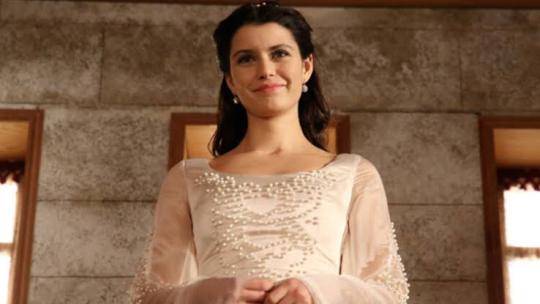

Kosem breaks her alliance with Safiye after watching her actions during Ahmed's illness. Kosem's father found her through the help of Alexander (now Iskender) but Safiye learns about this and arrests him. Kosem learns that it was Fahriye who poisoned Ahmed and Mustafa due to her love interest. Safiye threatens her that she'll kill her father if she tells this to Sultan. She uses Kosem and then kills her Father. Fahriye is not married with Mehmed Giray (her love interest) instead she is married to Dervaish Pasha (closest to Ahmed) which Ahmed approved and wedding preparations began. On the other hand Dervaish Pasha confesses his love for Valide Sultan Handan to her about which she's angry but she spares his life despite this. Kosem pledges to take revenge of her father. Cennet Kalfa (Safiye's Confident) is told by Kosem that the reason of her burnt face is Safiye. When she was Mehmed III concubine, it was Safiye who schemed against her and burnt her face. Cennet after learning this switched her side secretly and gives Kosem the ring of her mother which her father brought from Tinos which Safiye kept with her. Kosem threatens. Safiye that she will tell everything to Sultan but she didn't give any attention to her. Kosem schemed and caught the letter of Fahriye in which it was written that she poisoned Sultan. She showed this letter to Safiye and told her that she will return this letter only if she leaves the Topkapi Palace and shifts to Aski Palace. Safiye agreed and left for Aski Palace. On her way when she unfolded Fajriye's letter given by Kosem she found out that it was simple paper and Kosem had played with her and the letter is still with her. Cennet confesses that she helped Kosem and she officially changed sides. Sultan gives Kosem the crown of great Hurrem Sultan. Kosem walks in the palace as if shes the queen. Kosem hands over the letter to Ahmed and told him all the truth about Fahriye. He despite of this becomes disappointed from Kosem as he said that he only liked her due to her Innocence but now she's no more innocent as she is also scheming like other Sultanas.
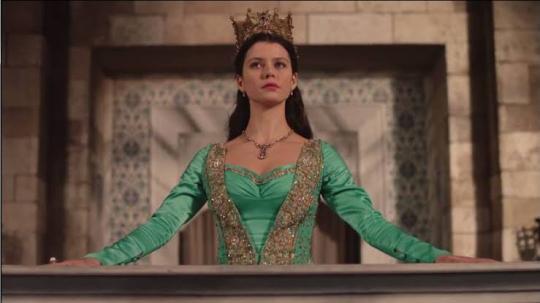
On the other hand Mahfiruz gives birth to Sultan's first child a son named Osman. This created jealousy in Kosem's heart. Sultan is not talking to Kosem and she is not allowed to visit him nor to come in his room. Kosem learns that she's pregnant and soon she gives birth to Sultan's second son Mehmed. Sultan is still not taking to her so she decided to tell him whole truth about the murder of her father. She told him that she only took revenge from Safiye because she killed her father. After learning this his heart melts and he is reunited with Kosem. Fahriye on the other hand takes refuge in Mahmood Hudayi Welfare where it is not allowed to kill anyone. Ahmed tries to get her out but she didn't. Kosem again schemed with Zulfikar Pasha and Mehmed Giray and made her come out of the welfare and then arrested her. Sultan praises the efforts of Kosem and Zulfikar. She is presented to Sultan and she pleads him to forgive her. He tells him that he'll think about this matter. Fahriye settles back in her place with Dervaish Pasha where he executes her on the order of Sultan Ahmed. Safiye when learns about her daughter's executions goes into. Deep sorrow and pledges to take revenge from Ahmed.
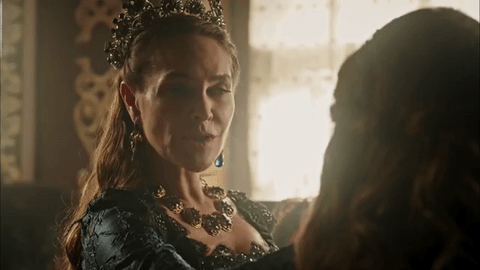
Ahmed goes to hunt with his guards where he faces assassination attempt on himself but he was saved by Dervaish who put his life in danger. Safiye starts rebellion in palace. She told Jannisaries that Ahmed is no more. They believed and sided with her. She planed to put Mustafa on throne. Kosem saves the life of Valide Sultan, Osman and Mehmed however unfortunately Mahfiruz is killed by Safiye's guards. Safiye ordered execution of Kosem but she is spared by Bulbul (Safiye's Agha) who admired her. She along with Valide and her son's took refuge in a girl's house named Meleki. At the time of Mustafa's crowning Ahmed, by everyone's surprise appeared and kills pashas who sided with Safiye. Zukfikar and Mehmed Giray sided with Ahmed. Safiye tries to poison herself but she is caught by Ahmed who then imprisoned her. All her accessories and property was taken away. Humashah (Safiye's daughter) arrives in the capital.


Kosem learns from Halime (mother of Mustafa) that Handan and Dervaish are in love with each other and that Dervaish killed Mehmed III. Kosem schemed again but now against Dervaish and Handan, she managed to tell Sultan about Dervaish. Humashah on the other hand falls in love with Zulfikar Pasha. She's living in the palace and was convincing Sultan to release Safiye. Sultan learns that Dervaish killed Mehmed III only to save Ahmed's life however Ahmed executed Dervaish. (Who was then Prime minister) on charges of Sultan's murder. Handan commits suicide in fear that Ahmed will learn about her love and also because she was in deep sorrow after the execution of Dervaish. Palace mourns the loss of Valide Sultan. Huamshah is made incharge of Harem.

After sometime Safiye is released. Humashah's husband comes to. Capital and asks Sultan to let Humashah go with him but she refuses. Humashah and Safiye learns that Iskender is Shehzade Safiye's son and Humashah's brother. Kosem learns that she is again pregnant. She tells this good news to Sultan who then makes her incharge of Harem.
Kosem after so much struggle finally managed to rule Harem.
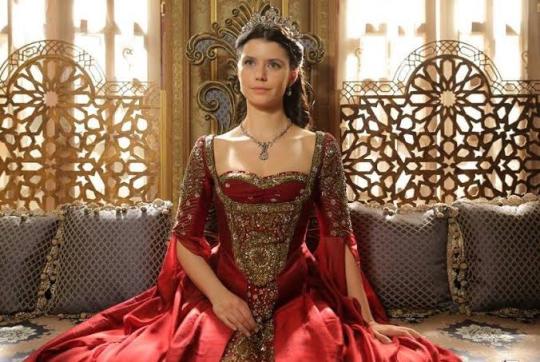
To be continued
Coming up next - Kosem Sultan: Rise to Power Episode 2
8 notes
·
View notes
Photo
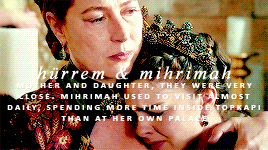

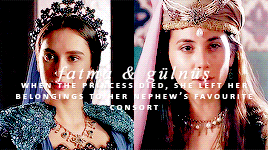

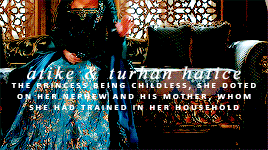
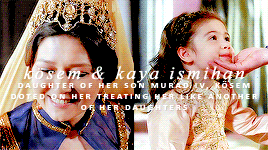
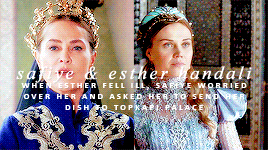

OTTOMANLADIES’ 2ND BIRTHDAY CELEBRATIONS
my favourite female relationships in ottoman history – requested by anon
#history#historyedit#haseki hurrem sultan#mihrimah sultan#safiye sultan#elizabeth i#kosem sultan#kaya ismihan sultan daughter of murad iv#fatma sultan daughter of ahmed i#emetullah rabia gulnus sultan#atike sultan daughter of ahmed i#turhan hatice sultan#esther handali#beyhan sultan daughter of mustafa iii#hatice sultan daughter of mustafa iii#seniha sultan daughter of abdulmecid i#fatma sultan daughter of abdulmecid i#ottomanladiesedit#*requested
763 notes
·
View notes
Photo










𝐢𝐧 𝐭𝐡𝐞 𝐦𝐨𝐧𝐭𝐡 𝐨𝐟 𝐣𝐮𝐥𝐲 𝐢𝐧 𝐨𝐭𝐭𝐨𝐦𝐚𝐧 𝐡𝐢𝐬𝐭𝐨𝐫𝐲
#history#historyedit#ottoman history#on this day in ottoman history#mahmud ii#mihrimah sultan daughter of mahmud ii#fehime sultan daughter of murad v#mehmed v#esma sultan daughter of abdulhamid i#hatice sultan daughter of mustafa iii#hatice sultan daughter of mehmed iv#murad iii#mehmed i#ottomanladiesedit#*everymonth
113 notes
·
View notes
Photo

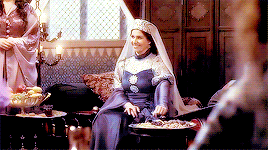
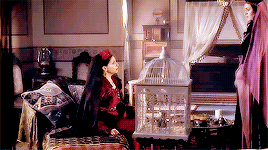


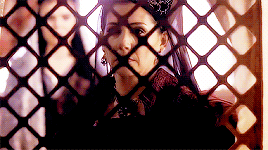


On this day in history, 14 June, Hatice Sultan, daughter of Mustafa III was born:
Hatice Sultan was the daughter of Mustafa III and (Ayşe) Âdil-Şâh Kadın, Third Imperial Consort. She was born on 14 June 1768 and as such was the younger sister of Beyhan Sultan. Her father died when she was six and she moved to the Old Palace with her mother and elder sister. There, she received education from the other concubines living there, but she also developed depression and anxiety: her mother wrote to the new sultan, Abdülhamid I, to find husbands for her daughters so they could leave the Old Palace.
Hatice Sultan married Seyyid Ahmed Paşa in November 1786; the bride was eighteen but the groom was already approaching fifty and had already children from a previous marriage. She bore no children and was left a widow at the age of thirty, when Ahmed Paşa died in 1798.
Hatice Sultan's life changed when her half-brother Selim III ascended the throne in 1789. She was given land in Arnavutköyü where she wanted to build a palace that could be the synthesis of Ottoman and European architecture; in 1790 she met Antoine Ignaz Melling after he had been recommended to her by Baron Hübsch, the Danish envoy in Istanbul. Hatice Sultan began a long correspondence with him - first in French and then in Ottoman Turkish with Latin alphabet - and even invited him to live in her palace, arousing rumours of an affair. Melling used to design clothes for his patroness, furnish Selim III’s rooms, design furniture pieces and jewellery. She used to call him “Melling Kalfa” in her letters. Both she and her sister Beyhan were big supporters of the Nizâm-ı Cedîd army project developed by Selim III.
Hatice Sultan died on 17 July 1822 and was buried in the mausoleum of Mihrişah Valide Sultan. As she had had no children, she left everything she owned to her sister Beyhan. Her debts were so high that the new sultan - Mahmud II - had to pay them.
Sources: M. Çağatay Uluçay - Padişahların Kadınları ve Kızları, Yılmaz Öztuna - Devletler ve Hanedanlar, Necdet Sakaoğlu - Bu Mülkün Kadın Sultanları
#history#historyedit#ottoman history#on this day in ottoman history#hatice sultan daughter of mustafa iii#ottomanladiesedit
142 notes
·
View notes
Note
Mustafa III + harem and children
Consorts
Aynü’l-Hayât Baş-Kadınefendi (1726?-1.8.1764): she is sometimes considered Mustafa III's official wife. She was Mihrimah Sultan's mother, though Öztuna claims she was also mother to Mihr-i Şâh Sultan, Hibetullah Sultan and Hatice Sultan (the princess that died young). Esad Efendi, in Teşrifat-ı Kadime, claims that she died on 1 August 1764 and that she was Third Imperial Consort to "Allah's Shadow on Earth". Öztuna, on the other hand, claims that she was Mustafa III's first Baş-Kadınefendi. She was buried in Laleli, the plaque on her tomb clearly identifying her as the mother of Mihrimah Sultan (there is no mention of possible other daughters). She had built the Katırcıham Mescid Mosque in 1760.
Mihr-i Şâh Baş-Kadınefendi, later Vâlide-Sultân (1745?-16.10.1805): mother of Selim III, Fatma Sultan, and Hibetullah Sultan. Some historians say that she was mother to Şâh Sultan as well, but she was born only 8 months before Selim III. According to a legend, she was Genoese, but it's more likely that she was Georgian instead. Sakaoğlu claims that she was appointed Senior Consort because she was the mother to Mustafa III's only son. There is not much information about her tenure as Senior Consort, only that she was immediately sent to the Old Palace on the death of her husband. A document preserved in the Topkapi Palace Archives states that Mustafa III had borrowed money from Mihr-i Şâh; since the document wasn't torn, it means that the debt was never paid back (most probably because of Mustafa III's sudden death). On the death of his uncle Abdülhamid I on 7 April 1789, Selim III ascended the throne and Mihr-i Şâh was ceremoniously crowned Valide Sultan through the procession of the Valide Sultan, at which dignitaries, members of the ulema and the military participated. The next day the Valide Sultan assumed office with a written decree that was read to everyone present at the ceremony. At this point, gifts were sent to her. During her 15-years tenure, Mihr-i Şâh Sultan supported her son's innovations and was personally behind the renovations in the Topkapi Palace harem. According to a palace rumour, Selim III would go greet his mother in her apartments every single morning. Mihr-i Şâh Valide Sultan died on 16 October 1805, around 10 in the morning. During her tenure, she oversaw philanthropic projects, such as two fountains in memory of her two daughters - Hibetullah and Fatma - who had died young, and the Mihr-i Şâh Sultân Mosque with two minarets.
Fehîme 2. Kadınefendi (?? - 1761): she died while giving birth and, according to Sicill-i Osmani, Mustafa III called her "şehide" (martyr). Sakaoğlu claims that she was a Hanım, and not the Second Imperial Consort. She's not mentioned in Uluçay.
Rifat 2. Kadınefendi (1744?-12.1803): apparently a free woman whom Mustafa III met during an incognito tour of Istanbul, she was kept outside of the harem for a long time, then trusted into the care of the Grand Vizier and his wife who educated her in the harem ways, and finally admitted to the Imperial harem as Fourth Imperial Consort. In 1764, she eventually rose to the rank of Second Imperial Consort. From her burial place in Haydarpaşa Cemetery, it has been suggested that after Mustafa III's death, she returned to her own family instead of being sent to the Old Palace. Öztuna claims that she was Şâh Sultan's mother.
(Ayşe) Â’dil-Şâh 3. Kadınefendi (1748?-19.12.1803): of Circassian origin, she was the mother of Beyhan and Hatice Sultan. She died during the Ramadan month, supposedly around or on the same day of Rifat Kadınefendi. She was buried in the garden of Mustafa III's tomb, where an old plaque identified her as the mother of Beyhan and Hatice Sultan, which did not survive to present day. In her honour, her daughter Beyhan built a school around Yeşillioğlu Palace in the same year she died. In 1805, her other daughter, Hatice, built the Adilşah Kadın Mescidi Mosque. That she was also called Ayşe is present only in Alderson and Öztuna.
Binnâz 3. Kadınefendi (?? - 5.1823): not mentioned in Uluçay or Sakaoğlu, she was a childless consort who, after Mustafa III's death, married Çayır-zâde İbrahim Ağa. She had been Fourth Imperial Consort until Aynü’l-Hayât Kadınefendi's death in 1764, when she was promoted. At the time of her death, she was about 80 years old. She was buried in the Hamidiye Mausoleum.
Gülman: no information about her. Alderson suggests that she might have been called Gülnar instead.
Children
Hibetullah Sultan (17.3.1759 - 6.1762): she was the first birth in the Dynasty in 29 years. Her birth was therefore celebrated for ten days and ten nights by rich and poor alike. Her name is sometimes written as Heybetullah or Heyyibetullah. On the fountain dedicated to her, it is written that her mother was Mihr-i Şâh Sultan, and not Aynü’l-Hayât Kadınefendi as Öztuna believes. Her nurse seems to have been Emine Hanım, Aynü’l-Hayât Kadınefendi's sister. When she was three months old, Hibetullah was engaged to Hamid Hamza Paşa in another pompous ceremony; on this occasion, her father bestowed the Gümrükçü farms to her. Unfortunately, she died at the age of three either of smallpox or another disease. She was buried in her father's mausoleum.
Şâh Sultan (21.4.1761 - 11.3.1803): mother unknown, she was born during the month of Ramadan and therefore the celebrations in her honour were postponed on the day next to Eid. She was engaged at the age of three to Grand Vizier Köse Bahir Mustafa Paşa but, at the engagement ceremony, Mustafa III exiled his Grand Vizier to Lesbo and later had him executed. At the age of seven, she was engaged to Nişancı Yağlıkçızade Mehmed Emin Paşa (later Grand Vizier); a year later, though, he was exiled to Edirne and executed there. Finally, during the reign of her uncle Abdülhamid I, she was married to Nişancı Seyyid Mustafa Paşa on 6 November 1778. The couple had two daughters: Şerife Havvâ Hanım-Sultân and Âliye Hanım-Sultân, both died at six months old. Şâh Sultan and her husband adopted a girl, New Hanım, who died at the age of 18. Şâh Sultan may have suffered from health problems because she lived in a mansion on the seaside and was definitely less active than her other two sisters, Beyhan and Hatice. Selim III used to visit her very often, even staying for days and summoning the Grand Vizier there to discuss affairs of state. In Tarih-i Cevdet it is stated that she was an impeccable Muslim, who protected and helped the poor. In 1792, she built the Şâh Sultan fountain in Yeşildirek; in 1800, she built her tomb, a school and a public fountain near the Zal Mahmud Paşa Mosque in Eyüp. She died at the age of 42 years old and was buried in the tomb she had built for herself.
Selim III (24.12.1761 - 28.7.1808): 28th sultan of the Ottoman Empire, he reigned for 18 years before being deposed in favour of his cousin Mustafa IV. He had several consorts but no children.
Mihr-i Mâh Sultan (5.2.1762 - 3.1764): Alderson claimed she was born in 1760 but documents in Topkapi Palace Archives found by Uluçay reveal that she was born in 1762 and died in 1764. Her mother was Aynü’l-Hayât Kadınefendi. For her birth, celebrations were held for five days. She, unfortunately, died young and was buried next to her sister Hibetullah.
Mihr-i Şâh Sultan (9.1.1763 - 21.2.1769): mother unknown, Mustafa III ordered celebrations for three days and three nights to be held. She died at the young age of 6 and was buried in her father's mausoleum.
Beyhan Sultan (13.1.1766 - 7.11.1824): elder daughter of Â’dil-Şâh Kadınefendi, she is sometimes called Big-han Sultan. She was nine years old when her father died, and moved to the Old Palace with her mother and younger sister. In a note sent to the Grand Vizier, the new sultan Abdülhamid I said that Beyhan fainted often inside the Old Palace and had bouts of screaming and shouting. Her mother thought that it was time for her to get married. The sultan selected Silahdar Çelik/Perişan Mustafa Paşa for Beyhan; the wedding was celebrated on 22 April 1784 and the couple had a child together, Hatice Hanım-Sultân, who lived into adulthood, as she got married in 1814. Beyhan was the sister that Selim III met most often during his reign; he would visit her on her seaside palace on the Bosphorus and listen to musical performances together. She was most active in the innovations of the empire and even organised parties for foreign ambassadors' wives. She built twin palaces in Yeşillioğlu, giving the other to her sister Hatice. In 1791, she demolished the old Çırağan Palace with Selim III's approval and started the construction of a European-style mansion. The mansion was ready in 1795, just when her sister Hatice was busy with the construction of her seaside mansion with Melling's help. Her husband died around 1798 but Beyhan did not remarry though she lived for 26 more years. She died during the reign of Mahmud II at the age of 59.
Hatice Sultan (15.6.1766 -1767): according to Alderson and Öztuna. There is no information about her.
Şehzade Mehmed (10.1.1767-12.10.1772): died of smallpox, his tutor had been Küçük Hüseyn Ağa (later Damad and Paşa). He was buried in the mausoleum of his father.
Hatice Sultan (13/14.6.1768 - 17.7.1822): younger daughter of Â’dil-Şâh Kadınefendi, she was six years old when her father died and she had to move to the Old Palace with her mother and elder sister. She was educated by the other concubines living there. Like her sister, Hatice Sultan developed depression, according to her mother, who wrote to the new sultan, Abdülhamid I, asking him to find a husband for her younger daughter. According to Hatice Sultan's deputy, Ahmed Vasıf Efendi, the princess' depression was due to the environment in which she was forced to live. Ahmed Vasıf Efendi would later write a history of the period, providing valuable information on Hatice Sultan's life. At the age of 18, the princess married Seyyid Ahmed Paşa; the marriage lasted till 1799 when the pasha died, but the couple had no children. After being widowed, Hatice Sultan chose not to remarry. In 1806, she built the Hatice Sultan Fountain in the Spice Bazaar. In 1809, she bought a large plot of land in Arnavutköyü and had the Hatice Sultan Palace built there. She died in 1822, during the reign of Mahmud II, and as she had no children, she left everything to her elder sister Beyhan. Her staggering debt was paid off by Mahmud II. She was buried in the mausoleum of Mihr-i Şâh Valide Sultan.
Fatma Sultan (9.1.1770 - 26.5.1772): she was buried in the mausoleum of her father
Reyhan Sultan (?-?): she was very young when she died.
#anon#ask post#ask: ottoman history#*consortsandchildren#mustafa iii#aynulhayat kadin (mustafa iii)#mihrisah sultan#fehime kadin#rifat kadin#adilsah kadin#binnaz kadin#hibetullah sultan daughter of mustafa iii#sah sultan daughter of mustafa iii#selim iii#mihrimah sultan daughter of mustafa iii#mihrisah sultan daughter of mustafa iii#beyhan sultan daughter of mustafa iii#sehzade mehmed son of mustafa iii#hatice sultan daughter of mustafa iii#fatma sultan daughter of mustafa iii#reyhan sultan daughter of mustafa iii#Anonymous
24 notes
·
View notes
Note
Princesses who were politically active?
Nefise Melek Hatun: daughter of Murad I, she married Karamânoğlu Alâeddîn Alî Bey and acted as mediator between her father and her husband during the Ottoman-Karaman conflict.
Selçuk Hatun: daughter of Mehmed I, she had a long life in which she acted as ambassador in the conflict between the future Bayezid II and his half-brother Cem
Mihrimah Sultan: daughter of Suleyman I and Hurrem Sultan, she was married to the Grand Vizier but exerted political influence in her own right as well. As a widow, she helped her brother Selim II both politically and economically (lending him money to pay the troops). She also managed the harem for him. Her daughter Ayşe Hümâ-Şâh was influential as well, being married to her father's successor.
Ismihan Sultan: daughter of Selim II, she was married to the Grand Vizier and as such was the most influential among her sisters. She also wrote to Catherine de Medici about some Turkish ladies who had been captured by Frenchmen at sea.
Hatice Sultan: daughter of Mehmed IV, she became her brother Ahmed III's advisor during his reign and she was one of the people who stayed with him until the end.
Fatma Sultan: daughter of Ahmed III, she was regarded as the true power in the Tulip Era. She was married to the Grand Vizier and even entertained foreign ambassadors who wanted to speak with him or with her father.
Esma Sultan the elder: daughter of Ahmed III, she became influential during the reigns of her brothers Mustafa III and Abdülhamid I to the point she was called a new Ismihan Sultan. She also was married to the Grand Vizier. Esma Sultan prevented a coup d’état against Abdülhamid I by warning him that Halil Hamid Paşa planned to depose him in favour of Şehzade Selim
Beyhan and Hatice Sultan: daughters of Mustafa III, they were behind the process of modernization in palace life and were very influential during their half-brother Selim III's reign.
Esma Sultan the younger: daughter of Abdülhamid I, she was Mahmud II's favourite sister even though they had different mothers. She was selected by dissidents as a possible replacement for Mahmud II on the throne.
Seniha Sultan and Fatma Sultan: daughters of Abdülmecid I, they were against Abdülhamid II's rule and tried to free Murad V from Çırağan Palace to put him back on the throne. In this they were helped by their brothers Ahmed Kemaleddin and Selim Süleyman.
Fehime Sultan: daughter of Murad V, she was a supporter of the constitution and composed a piano sonata titled "Pour La Constitution"
I hope I haven’t forgotten anyone. If I did, I’m sorry.
#anon#ask post#ask: ottoman history#nefise hatun daughter of murad i#selcuk hatun daughter of mehmed i#mihrimah sultan#ismihan sultan daughter of selim ii#hatice sultan daughter of mehmed iv#fatma sultan daughter of ahmed iii#esma sultan daughter of ahmed iii#beyhan sultan daughter of mustafa iii#hatice sultan daughter of mustafa iii#esma sultan daughter of abdulhamid i#seniha sultan daughter of abdulmecid i#fatma sultan daughter of abdulmecid i#fehime sultan daughter of murad v
58 notes
·
View notes
Note
Was it mandatory for widowed princess to stay at old palace? What if they want to stay at their own purchased palace? Is it possible?
No, it wasn't, but I guess it depended on the degree of closeness the widowed princess had with the sultan and whether she was asked to marry again or not.
Esma Sultan the younger was widowed in her twenties, decided to never remarry, and lived the rest of her life in her palace. Her cousin Hatice Sultan did the same (I think she built her new palace when she was already a widow). Sisters Fatma and Seniha (daughters of Abdülmecid I) lived in their villas after the former's husband was exiled and executed and the latter's fled the empire. But those were different times and the Old Palace wasn't used anymore.
I tried to find an earlier example but I couldn't come with much. Hatice Sultan (Mehmed IV's daughter) outlived her second husband of 30 years, and she was certainly in Istanbul during Ahmed III's reign because she advised him to sacrifice statesmen during the Patrona revolt to save his life. I think she lived in her own palace, the Hatice Sultan Palace, located just outside the Ayvansaray Gate, but I couldn't find hard proof of this. She died in Edirne, though, and Sakaoğlu says that she died "in her own palace" so it's possible that she had moved for health problems or because she wasn't well-accepted in the new regime (though she was Mahmud I's aunt too so...)
#anon#ask post#ask: ottoman history#esma sultan daughter of abdulhamid i#hatice sultan daughter of mustafa iii#fatma sultan daughter of abdulmecid i#seniha sultan daughter of abdulmecid i#hatice sultan daughter of mehmed iv#Anonymous
11 notes
·
View notes
Photo


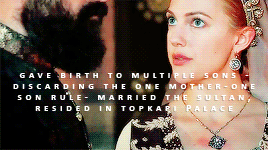


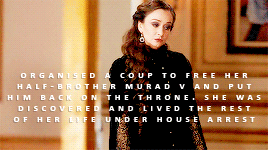
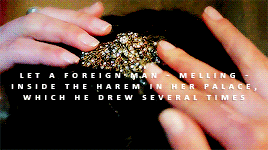
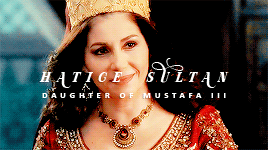
"rule-breakers" in Ottoman history -- requested by anon
#history#historyedit#ottoman history#kosem sultan#haseki hurrem sultan#hatice sultan daughter of mustafa iii#fatma sultan daughter of abdulmecid i#*requested#ottomanladiesedit
1K notes
·
View notes
Photo







Ottoman Princesses named: Hatice
Hatice is the Turkish equivalent of the Arabic name Khadija, the name of the first wife of Prophet Muhammad. As such, it was one of the most popular names in the Ottoman Dynasty both for princesses and consorts.
#history#historyedit#ottoman history#hatice hatun daughter of orhan#hatice hatun daughter of murad ii#hatice sultan daughter of mehmed iii#hatice sultan daughter of mehmed iv#hatice sultan daughter of mustafa iii#hatice sultan daughter of mahmud ii#hatice sultan daughter of murad v#durrusehvar sultan daughter of abdulmecid ii#ottomanladiesedit#princessesnames#hatice hatun daughter of mehmed i#hatice sultan daughter of bayezid ii#hatice sultan daughter of sehzade bayezid#hatice sultan daughter of ahmed iii#hatice sukriye sultan daughter of sehzade yusuf izzeddin#long post
1K notes
·
View notes
Note
Most favourite Ottoman princesses in 18th century.
Fatma Sultan, daughter of Ahmed III
Hatice Sultan, daughter of Mustafa III
Ayşe Dürrüşşehvar Hanım, daughter of Abdülhamid I
#anon#ask post#ask: ottoman history#fatma sultan daughter of ahmed iii#hatice sultan daughter of mustafa iii#ayse durrusehvar hanim daughter of abdulhamid i#Anonymous
10 notes
·
View notes
Note
Do you know the inside affair of Hatice Sultan and Antoine Ignace Melling, because we only know they had a alleged relationship. Do you know about from inside?
No, there is no proof that Hatice Sultan and Melling were lovers. Rumours started to go around because he had obtained access to her harem, which was unprecedented and scandalous. Their letters do not contain anything that could be possibly romantic or whatever. They just seemed to be two people who loved Istanbul and architecture.
6 notes
·
View notes